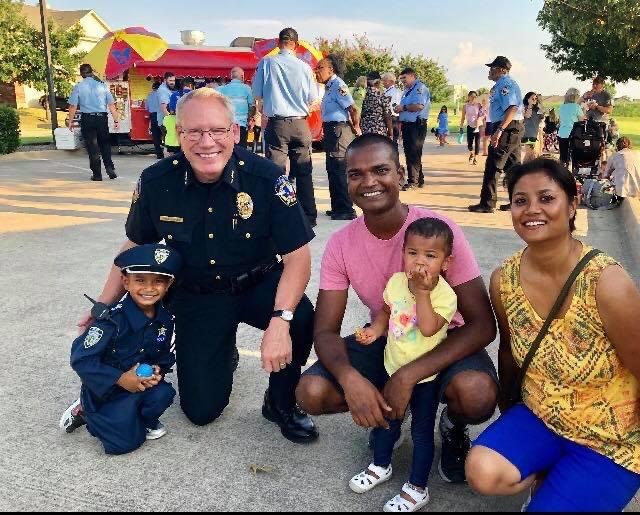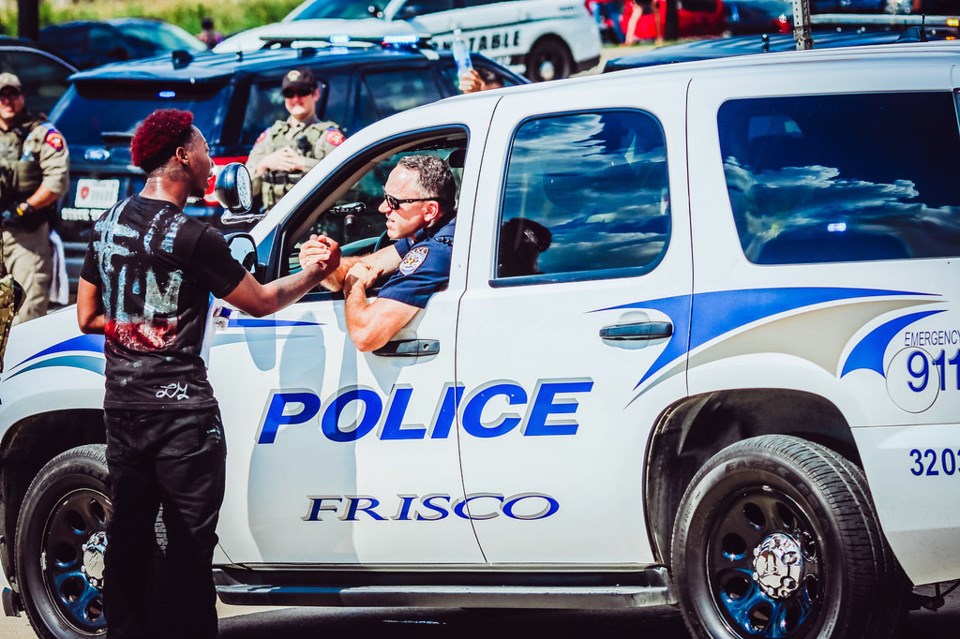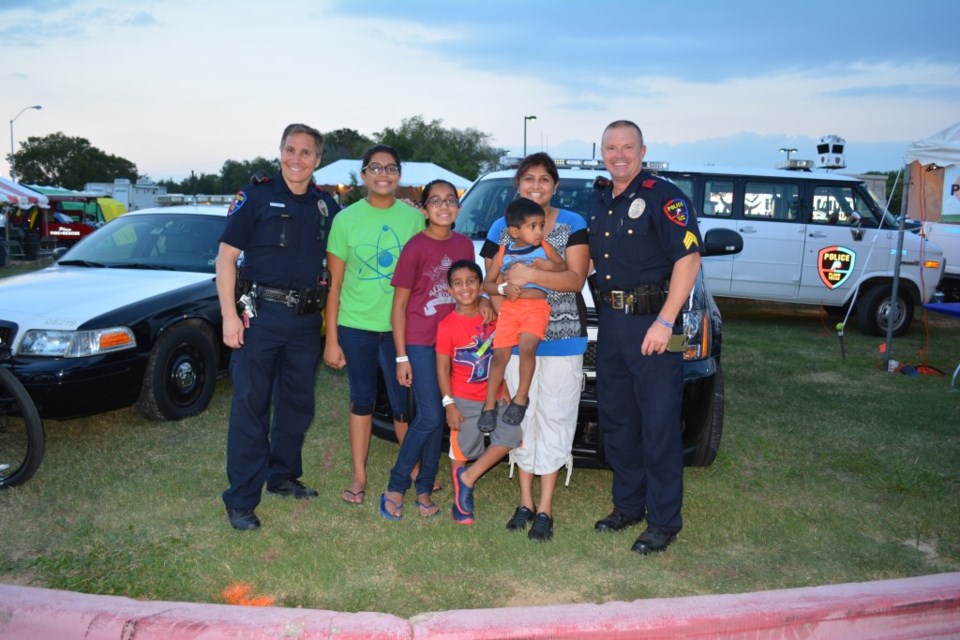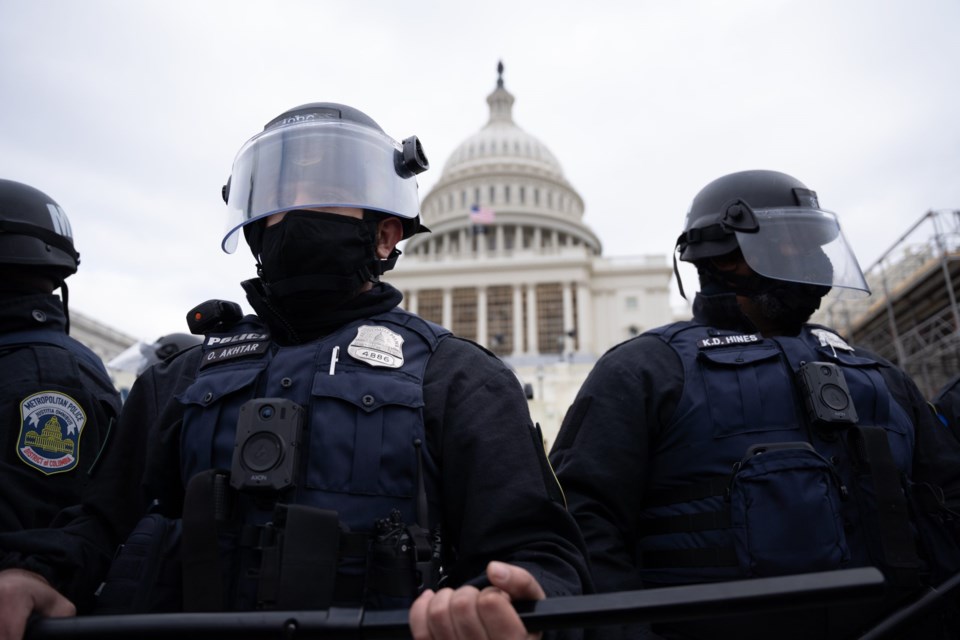Six days into the new year, Americans turned on their televisions, scrolled through their social media accounts, and were confronted with images of extremists breaking into The U.S. Capitol building, protesting against President Donald Trump’s election loss. As America watched, questions again arose about police and their responses to protesters.
On Jan. 6, many noted what Chuck Wexler, executive director of the Police Executive Research Forum, called “unpredictability” in the ways police forces respond to protesters, depending on who they are, and what they’re protesting. Vice President Kamala Harris said, "The reality of America today is what we have seen over generations and, frankly, since our inception, which is, we do have two systems of justice in America."
When police meet protesters, issues of race, bias and prejudice are still at play. Trust between police and the public becomes a pertinent question.
Plano, Frisco, and McKinney Police Departments all said that transparency within the community has been and always will be key to keeping communication open and building positive relationships with the people they serve.
“That is one of the biggest concerns that most citizens have—what goes on and what are we doing,” says David Tilley, Plano’s police public information officer.

Police Make Community Connections
Since coming to McKinney in 2015, Police Chief Greg Conley created the Police Chief’s Advisory Council. It's made up of pastors, ministers, and other liaisons between the department and the community. The PD also has the Neighborhood Police Officer (NPO) unit. Those officers serve in designated areas to better “focus on community-oriented and problem-oriented policing.”
In fact, they have developed several outreach programs to build relationships between the police and the people they serve. The Community Services unit, for instance, works with crisis intervention and mental health services as a liaison with outreach programs. Community members can also get coffee, cones, or tacos with McKinney police officers.
Plano Police officers have invested in reaching people through social media on sites like Facebook and Next Door. They also host a segment online called Plano Police Safety Minute with Officer Chris Bianez on YouTube and Facebook. Through it, they share tips on from how to avoid scams to how to protect your home and car from intruders.
Similar to the McKinney PD, Frisco PD envisions building a new program called Shop Talk. Officers will visit local barbershops to hang out and talk with residents instead of meeting them at the department. It's part of their mission to improve resident perceptions of police. “Going out and meeting people [makes] them more comfortable,” Officer Gene Willis says. “They may feel more like they can speak out. They might be more likely to reach out.
“Someone’s perception of you is their reality, and sometimes perception is based on experience,” he adds. “Experiences can change perception. If we are consistent and professional, it changes their experience. Experiences with professional officers might make them question a negative perception.”

Internal Connections
Besides new community engagement practices, Collin County area police departments are also continuing practices that they found have worked well. One of those practices involves hiring a more diverse workforce.
In McKinney, the PD has seen an increase in minority hiring over a three year period. It went from 22% in 2016 to 42% in 2019.
Plano PD emphasizes the importance of having a department makeup that reflects the diverse community it serves. “If we send an officer on a call, we know sometimes the person who understands the most is a person with similar background and culture,” Tilley says. “We believe that’s very important.”
Openness and transparency has also resulted in a good relationship with the community for the Frisco Police Department, Willis says.
“The community knows things happen in other places that are not happening here,” he says. “People find ways to tell us ‘We appreciate you.’ They did a water drive for us this summer; we are still drinking that water. They have lunches and barbecues for us.”

Easing unease
Recently, Plano Police Chief Ed Drain received an email about a traffic violation. During the traffic stop, the officer noticed that a 9-year-old boy in the car looked afraid. To help ease the boy's fears, the officer gave a Hotwheels car to the boy and talked with him. “That’s when I know the guys are getting it out there,” Drain says.
The community support for the police is strong in North Texas, Drain says. In fact, Jan. 21, he points out, is Law Enforcement Appreciation Day.
“[But] every day in Plano is Law Enforcement Appreciation Day,” he says. “We get so much support across the spectrum in this community.”
Part of the reason is because Plano PD holds recruits to a high standard. They face up to 34 weeks of training, with an additional 18 weeks of field training before hitting the streets. It's double what the state requires. Drain adds that they focus much of their time on soft skills like de-escalation, crisis intervention, and communication.
Good Intentions
Drain acknowledges that every department has officers across the political spectrum but says that political views are not relevant—the law has to be seen as neutral. “What matters is the law. What are they doing in regard to the law? You take an oath. The constitution is what matters, not which political party.”
Tilley says police trainers ask recruits: “If you are on the perimeter of a protest, and someone is protesting against something you are passionate about, are you going to be able to stand there and let them say what they want to say and turn the other cheek?”
“At the end of the day, when people are saying bad things about police, they are talking to the uniform,” he says. “They are not talking to you. You can’t paint law officers with a broad brush. Our community understands that.”
Frisco’s positive experience with protests, Willis says, largely came from protest organizers and police working together and communicating. “None of us are for police brutality. It’s easy for us to get behind [no brutality] in the wake of George Floyd. Brutality is not something we stand for.
“If things are done the right way, with good intentions on both sides, then it doesn't have to be like what you see in other places.”




